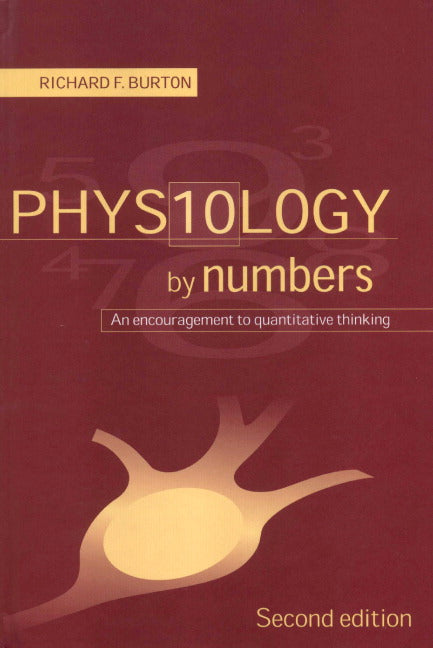Freshly Printed - allow 8 days lead
Couldn't load pickup availability
Physiology by Numbers
An Encouragement to Quantitative Thinking
This book explains physiological concepts through the use of simple calculations and accessible language.
Richard F. Burton (Author)
9780521772006, Cambridge University Press
Hardback, published 20 April 2000
254 pages, 30 b/w illus. 8 tables
23.6 x 15.6 x 1.9 cm, 0.51 kg
"Burton offers a well designed set of quantitative problems and carefully shows the reader how to solve them...I found that even with all my experience in mammalian physiology, the quantitative questions and answers in this book gave me further insights into several physiological processes." Growth, Development & Aging
Thinking quantitatively about physiology is something many students find difficult. However, it is fundamentally important to a proper understanding of many of the concepts involved. In this enlarged second edition of his popular textbook, Richard Burton gives the reader the opportunity to develop a feel for values such as ion concentrations, lung and fluid volumes, blood pressures etc. through the use of calculations which require little more than simple arithmetic for their solution. Much guidance is given on how to avoid errors and the usefulness of approximation and 'back-of-envelope sums'. Energy metabolism, nerve and muscle, blood and the cardiovascular system, respiration, renal function, body fluids and acid-base balance are all covered, making this book essential reading for students (and teachers) of physiology everywhere, both those who shy away from numbers and those who revel in them.
Preface to the second edition
Preface to the first edition: how to use this book
1. Introduction to physiological calculation: approximation and units
2. Quantifying the body: interrelationships amongst 'representative' or 'textbook' quantities
3. Energy and metabolism
4. The cardiovascular system
5. Respiration
6. Renal function
7. Body fluids
8. Acid-base balance
9. Nerve and muscle
References
Notes and answers
Index.
Subject Areas: Maths for engineers [TBJ], Animal physiology [PSVD], Maths for scientists [PDE], Physiology [MFG]


